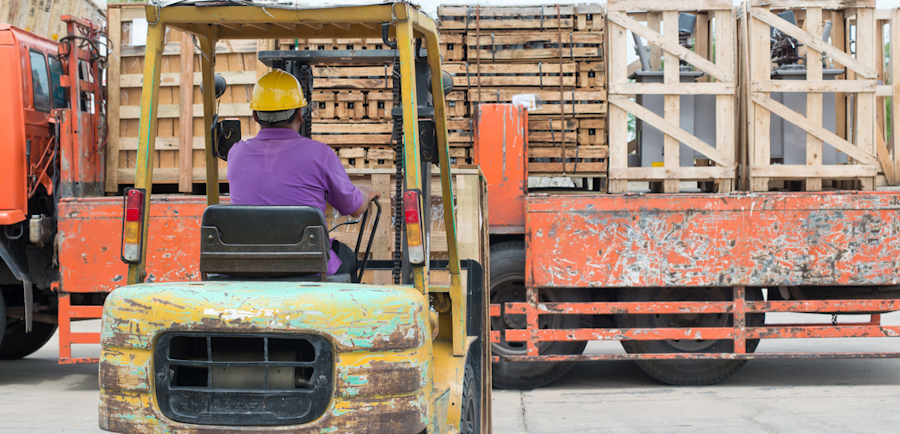News
How Do Forklifts Work?

A forklift truck is a small industrial vehicle featuring a power-operated forked platform, attached at the front, that can be raised and lowered for insertion under a cargo to lift or move it. Forklifts serve the needs of various industries including warehouses and other large storage facilities.
Forklifts are powered by electric battery or combustion engines powered by diesel or gas. Some forklifts allow the operators to sit while driving, while others require the operator to stand. They are extensively used throughout the warehouse logistics and manual handling industry for transporting materials and goods.
How Do Forklift Controls Work?
Forklifts have two sets of controls: one for steering and one for lifting. The steering controls are designed to be straightforward. They include an acceleration pedal, brake, steering wheel, forward gear, and reverse gear.
Unlike a car, forklifts use rear-wheel steering. When you turn the steering wheel, the wheels on the rear axle turn, rather than those on the front. The benefit of having rear-wheel drive is that it allows the driver a greater degree of rotation and precision when handling a load.
The lifting controls consist of two levers: one for lifting the fork up and down as well as one for tilting the load back and forth.
At the base of the masts are two pairs of additional hydraulic cylinders that attach to the floor of the vehicle. When the "tilt" handle is moved forward, air is pumped into the chamber. This increase in pressure pushes the piston head and causes the masts to "lean away" from the vehicle's body.
When the "tilt" handle is moved back, air is slowly released from this cylinder as air is pumped into the other pair of mast-attached cylinders. When the pistons from the latter pair push forward, the masts are rocked back toward the vehicle.

How Do Forklift Hydraulics Work?
Able to lift weights far in excess of those able to be lifted by humans, forklifts derive their power from two intertwining mechanisms: a pair of hydraulic cylinders and
a pair of roller chain pulleys.
The lift handle is wired to an electrical air pump at the base of the machine. When pressed, the handle activates the air pump, which draws in outside air through a filter and forces it into a tube leading to both hydraulic cylinders.
A hydraulic cylinder consists of a hollow tube sealed at one end with a movable, lubricated piston fitting into the other. Air enters the bottom of the cylinder through a special "one way" valve that allows gases to enter without leaking back out.
As the amount of gas in the cylinder increases, so does the pressure inside it. This pressure, applied across the area of the piston head, results in a net upward force. This upward push causes the piston to move up, which increases the volume of the gas and decreases the pressure. This automatically leads to a physical equilibrium where, at a given lift height, the force from the gas equals the downward force of the forklift's load.
To elevate the load, the operator pushes the handle in a forward direction, signaling the forklift to pump excess air to the cylinders. To lower the load the operator pulls the handle in a backward direction that signals a special valve to discharge gas from cylinders.
Forklifts are an essential part of cost-effective and productive manual handling. If you're in the market for a way to increase picker productivity, contact us today.

Subscribe
Keep up to date with PHL and all things forklift machinery.